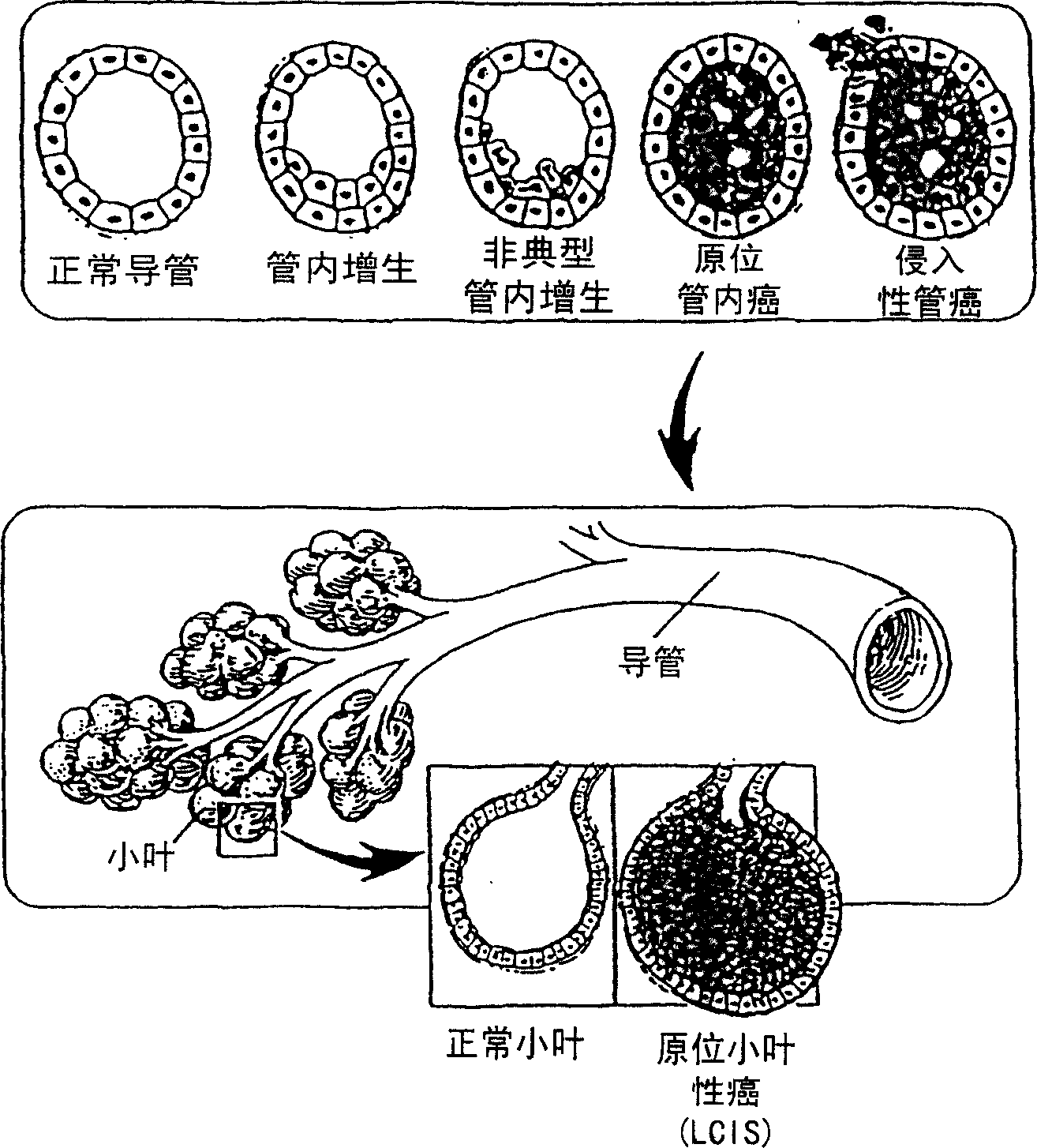Thermotherapy method for treatment and prevention of breast cancer and cancer in other organs
A technology of thermotherapy, organs, applied in the direction of heating appliances for therapeutic treatments, cooling appliances for therapeutic treatments, treatments, etc.
- Summary
- Abstract
- Description
- Claims
- Application Information
AI Technical Summary
Problems solved by technology
Method used
Image
Examples
Embodiment Construction
[0042]DETAILED DESCRIPTION OF THE PREFERRED EMBODIMENT
[0043] Dielectric Properties of Breast Tissue
[0044] figure 1 A detailed lateral view of the female breast is shown ("Mammography-A User's Guide", National Council on Radiation Protection and Measurements, NCRP Report No. 85, 1 August 1987, p. 6). The amount of glandular and adipose tissue in the breast can vary widely, from predominantly adipose to very densely glandular. Breast cancer cells (high water content cells) often form in milk ducts and lobules of glandular tissue, such as figure 2 Shown (modified from Dr. Susan Love's Breast Book, Addison Wesley, MA, 1990, pp. 191-196). The first sign of abnormal cell growth in the tube is called intratubular hyperplasia, followed by atypical (withatipia) intratubular hyperplasia. When the duct becomes nearly full, the condition is called intraductal carcinoma in situ (DCIS). These three conditions are called precancerous conditions. Finally, when the ductal cancer...
PUM
 Login to View More
Login to View More Abstract
Description
Claims
Application Information
 Login to View More
Login to View More - R&D
- Intellectual Property
- Life Sciences
- Materials
- Tech Scout
- Unparalleled Data Quality
- Higher Quality Content
- 60% Fewer Hallucinations
Browse by: Latest US Patents, China's latest patents, Technical Efficacy Thesaurus, Application Domain, Technology Topic, Popular Technical Reports.
© 2025 PatSnap. All rights reserved.Legal|Privacy policy|Modern Slavery Act Transparency Statement|Sitemap|About US| Contact US: help@patsnap.com



